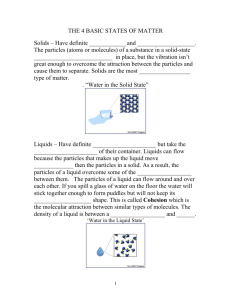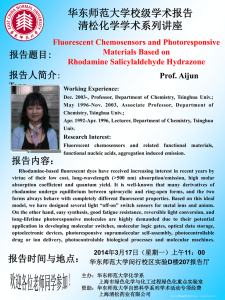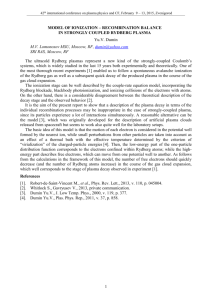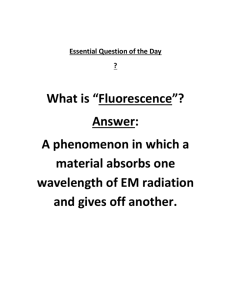Link to MSWord document 5i
advertisement
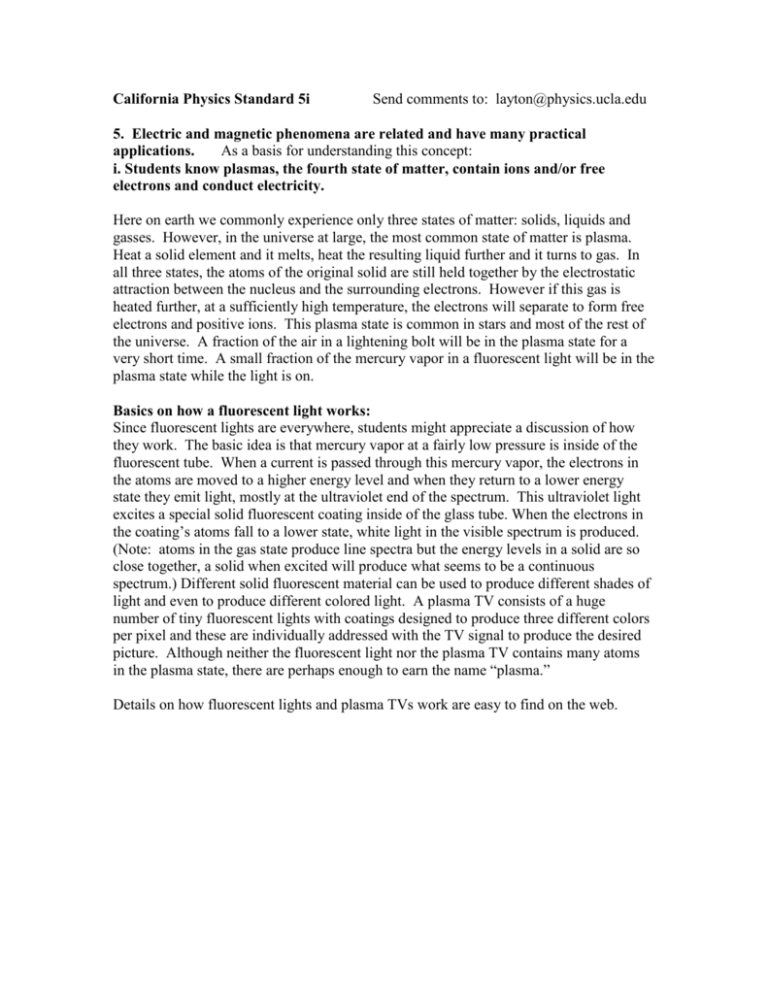
California Physics Standard 5i Send comments to: layton@physics.ucla.edu 5. Electric and magnetic phenomena are related and have many practical applications. As a basis for understanding this concept: i. Students know plasmas, the fourth state of matter, contain ions and/or free electrons and conduct electricity. Here on earth we commonly experience only three states of matter: solids, liquids and gasses. However, in the universe at large, the most common state of matter is plasma. Heat a solid element and it melts, heat the resulting liquid further and it turns to gas. In all three states, the atoms of the original solid are still held together by the electrostatic attraction between the nucleus and the surrounding electrons. However if this gas is heated further, at a sufficiently high temperature, the electrons will separate to form free electrons and positive ions. This plasma state is common in stars and most of the rest of the universe. A fraction of the air in a lightening bolt will be in the plasma state for a very short time. A small fraction of the mercury vapor in a fluorescent light will be in the plasma state while the light is on. Basics on how a fluorescent light works: Since fluorescent lights are everywhere, students might appreciate a discussion of how they work. The basic idea is that mercury vapor at a fairly low pressure is inside of the fluorescent tube. When a current is passed through this mercury vapor, the electrons in the atoms are moved to a higher energy level and when they return to a lower energy state they emit light, mostly at the ultraviolet end of the spectrum. This ultraviolet light excites a special solid fluorescent coating inside of the glass tube. When the electrons in the coating’s atoms fall to a lower state, white light in the visible spectrum is produced. (Note: atoms in the gas state produce line spectra but the energy levels in a solid are so close together, a solid when excited will produce what seems to be a continuous spectrum.) Different solid fluorescent material can be used to produce different shades of light and even to produce different colored light. A plasma TV consists of a huge number of tiny fluorescent lights with coatings designed to produce three different colors per pixel and these are individually addressed with the TV signal to produce the desired picture. Although neither the fluorescent light nor the plasma TV contains many atoms in the plasma state, there are perhaps enough to earn the name “plasma.” Details on how fluorescent lights and plasma TVs work are easy to find on the web.
